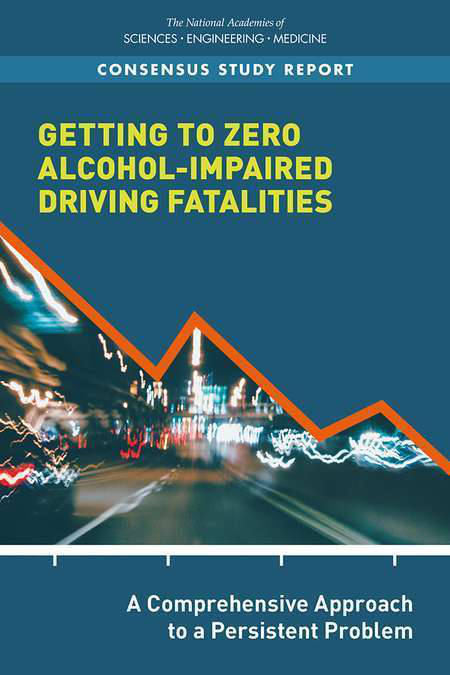Would dropping BAC to .05 reduce alcohol-related traffic deaths? | Aggregate, Excavation, Dump Truck Company
 The National Academies of Sciences, Engineering and Medicine says it has a blueprint to solve the problem of deaths caused by drunken driving, including dropping the minimum legal intoxication level to .05 blood alcohol level.
The National Academies of Sciences, Engineering and Medicine says it has a blueprint to solve the problem of deaths caused by drunken driving, including dropping the minimum legal intoxication level to .05 blood alcohol level.
In its new report, “Getting to Zero Alcohol-Impaired Driving Fatalities: A Comprehensive Approach to a Persistent Problem,” the academy also calls on the federal government to raise taxes on alcohol and for state and local governments to do more to reduce its availability.
The academy notes that since 1982, one-third of all traffic fatalities were caused by alcohol impairment.
The report makes the following recommendations:
- State governments should enact per se laws for alcohol-impaired driving at .05 percent blood alcohol concentration (BAC). The federal government should incentivize this change, and other stakeholders should assist in this process. The enactment of .05 percent per se laws should be accompanied by media campaigns and robust and visible enforcement efforts.
- Federal and state governments should increase alcohol taxes significantly.
- State and local governments should take appropriate steps to limit or reduce alcohol availability, including restrictions on the number of on- and off-premises alcohol outlets, and the days and hours of alcohol sales.
- States and localities should conduct frequent sobriety checkpoints in conjunction with widespread publicity to promote awareness of these enforcement initiatives.
- Federal, state and local governments should adopt and/or strengthen laws and dedicate enforcement resources to stop illegal alcohol sales (i.e., sales to already-intoxicated adults and sales to underage persons).
- Federal, state and local governments should use their existing regulatory powers to strengthen and implement standards for permissible alcohol marketing content and placement across all media, establish consequences for violations, and promote and fund countermarketing campaigns.
- When the Driver Alcohol Detection System for Safety (DADSS) is accurate and available for public use, auto insurers should provide policy discounts to stimulate the adoption of DADSS. Once the cost is on par with other existing automobile safety features and is demonstrated to be accurate and effective, the National Highway Traffic Safety Administration (NHTSA) should make DADSS mandatory in all new vehicles.
- Municipalities should support policies and programs that increase the availability, convenience, affordability and safety of transportation alternatives for drinkers who might otherwise drive. This includes permitting transportation network charlotte nc aggregate supply company ride-sharing, enhancing public transportation options (especially during nighttime and weekend hours and boosting or incentivizing transportation alternatives in rural areas).
- Every state should implement DWI courts, guided by the evidence-based standards set by the National Center for DWI Courts, and all DWI courts should include available consultation or referral for evaluation by an addiction-trained clinician.
- All health care systems and health insurers should cover and facilitate effective evaluation, prevention and treatment strategies for binge drinking and alcohol use disorders including screening, brief intervention and referral to treatment, cognitive behavioral therapy, and medication-assisted therapy.
- All states should enact all-offender ignition interlock laws to reduce alcohol-impaired driving fatalities. An ignition interlock should be required for all offenders with a BAC above the limit set by state law. To increase effectiveness, states should consider increased monitoring periods based on the offender’s BAC or past recidivism.
- NHTSA should ensure that timely standardized data on alcohol-impaired driving, crashes, serious injuries and fatalities are collected and accessible for evaluation, research and strategic public dissemination and that data from other government agencies and private organizations are included as needed. NHTSA should explore the usefulness of big data for inclusion in alcohol-impaired driving information strategies.
- To facilitate surveillance of alcohol-impaired driving that is timely, ongoing, concise and actionable, NHTSA should convene a diverse group of stakeholders that includes academic researchers, law enforcement, city and state public health, transportation sector and other federal agency representation to create and maintain a metrics dashboard, and publish brief, visually appealing quarterly and annual national and state-by-state reports that analyze and interpret progress in reducing alcohol-impaired driving.
- NHTSA, other federal partners, and private funding sources free of conflicts of interest should support training, technical assistance and demonstration projects in the implementation of effective strategies, including policy changes, for reducing alcohol-impaired driving.
- NHTSA should create a federal interagency coordinating committee to develop and oversee an integrated strategy for reducing alcohol-impaired driving, assure collaboration, maintain accountability and share information among organizations committed to reducing alcohol-impaired driving.
- The National Conference of State Legislatures should draft model legislation to provide benchmarks for states that seek to reduce alcohol-impaired driving fatalities.
For more details on the report, go to nationalacademies.org/StopDWIdeaths.
